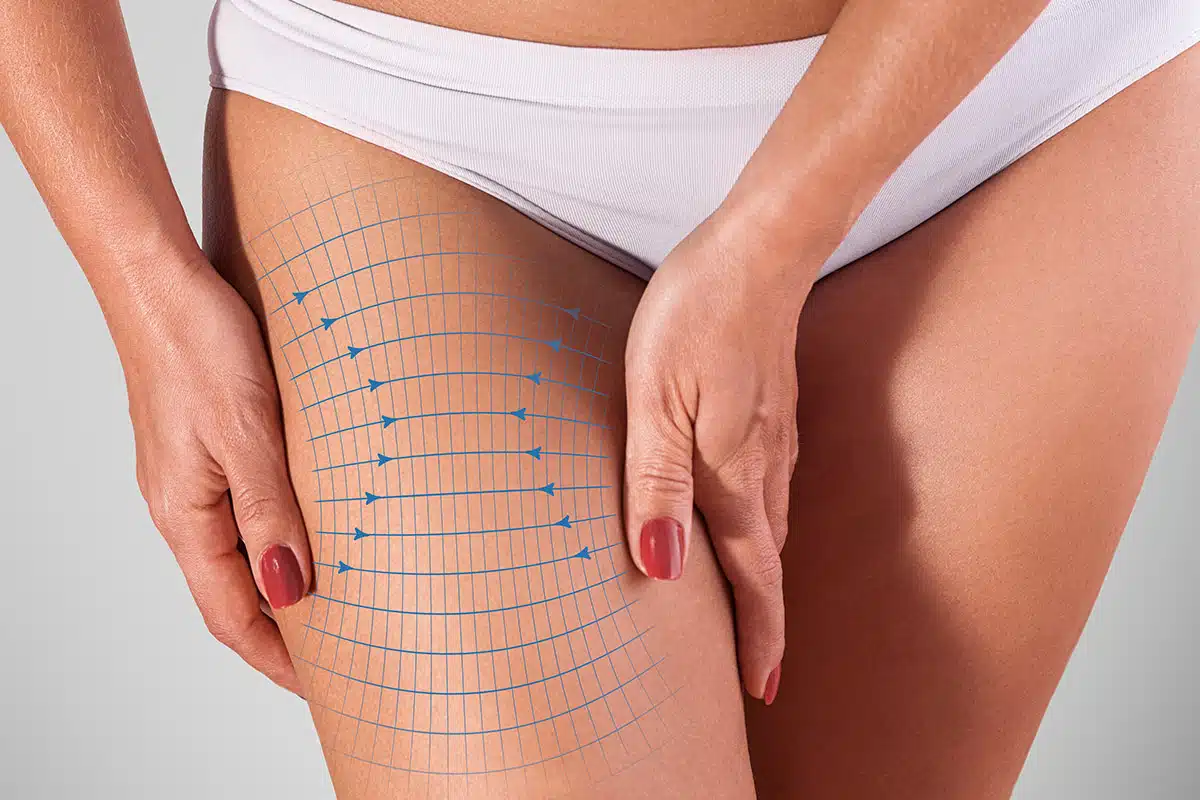For individuals seeking to refine the contours of their thighs, plastic surgery offers targeted solutions. Two primary approaches, the medial thigh lift and the lateral thigh lift, address distinct areas of concern, yielding significantly different results. Understanding the specific indications, surgical methodologies, and expected outcomes of each procedure is paramount for patients considering thigh contouring. This comprehensive guide will delineate the nuances of each technique, providing an authoritative overview for those navigating their cosmetic journey, particularly when comparing options like Thigh Lift Surgery in Turkey with services in their home country, such as the UK.
Table of Contents
Understanding Thigh Lifts: An Overview
Thigh lift surgery, or thighplasty, is a body contouring procedure designed to reshape the thighs by reducing excess skin and, in some cases, fat. This intervention is particularly beneficial for individuals who have experienced significant weight loss, leading to sagging skin that diet and exercise cannot resolve. The presence of loose, hanging skin can cause discomfort, hygiene issues, and restrict physical activity, in addition to aesthetic concerns. Thigh lifts aim to create a smoother, more toned, and proportionate appearance to the upper legs.
While the overarching goal is thigh refinement, the specific anatomical areas targeted define the type of lift performed. The choice between a medial and lateral thigh lift is dictated by the patient’s unique anatomy, the location of skin laxity, and their aesthetic goals. A thorough consultation with a board-certified plastic surgeon is essential to determine the most appropriate technique, ensuring that the desired medial thigh lift vs lateral thigh lift different results align with realistic expectations.
Medial Thigh Lift: Targeting the Inner Thighs
The medial thigh lift primarily addresses skin laxity and excess fat on the inner thighs. This area is commonly affected by aging, genetics, and substantial weight fluctuations, leading to a loss of definition and a ‘rubbing’ sensation between the thighs. The procedure focuses on tightening the skin from the groin down towards the knee, creating a smoother and firmer inner thigh contour.
Candidates for Medial Thigh Lift
Ideal candidates for a medial thigh lift are individuals with:
- Significant loose skin on the inner thighs that sags and may cause chafing.
- Stable weight, without plans for further major weight loss or gain.
- Good general health, free from conditions that could impair healing.
- Realistic expectations about the surgical outcomes and scar placement.
- Non-smokers or those willing to cease smoking before and after surgery.
Expected Outcomes and Recovery for Medial Lift
The surgical incision for a medial thigh lift is typically placed along the groin crease, extending downwards towards the inner thigh, and sometimes along the posterior aspect of the leg, depending on the degree of skin removal required. This strategic placement aims to conceal the scar within natural body folds or swimsuit lines. The primary outcome is a significant reduction in inner thigh circumference and improved skin tautness. Patients can expect a more defined leg contour, reduced chafing, and enhanced confidence in clothing.
Recovery involves swelling, bruising, and some discomfort, which is managed with pain medication. Drains may be placed temporarily to collect fluid. Compression garments are essential for several weeks to support healing and reduce swelling. Light activity is encouraged early on, but strenuous exercise must be avoided for 4-6 weeks. The full aesthetic benefits become apparent as swelling subsides over several months.
Lateral Thigh Lift: Addressing the Outer Thighs and Hips
The lateral thigh lift, also known as an outer thigh lift or circumferential thigh lift (when combined with a buttock lift), targets the outer thighs, hips, and sometimes the buttock area. This procedure is designed to correct sagging skin and tissue on the sides and back of the upper legs, which often results in a flattened or drooping appearance of the buttocks and a lack of definition in the outer thigh region. It effectively lifts and tightens these areas, providing a smoother transition from the torso to the legs.
Candidates for Lateral Thigh Lift
Suitable candidates for a lateral thigh lift generally present with:
- Excess, loose skin and tissue on the outer thighs, hips, and potentially the buttocks.
- Often, a history of massive weight loss, resulting in widespread skin laxity.
- A commitment to maintaining a stable weight post-surgery.
- Overall good health and an understanding of the surgical process.
Expected Outcomes and Recovery for Lateral Lift
The incision for a lateral thigh lift typically runs along the upper outer thigh, extending around the hip towards the buttock crease. In a full circumferential lift, it may extend completely around the body. While these incisions are more extensive than those for a medial lift, they are strategically placed to be camouflaged by undergarments or swimwear. The key outcomes include a noticeable lift and tightening of the outer thighs and buttocks, reduction of ‘saddlebags,’ and an overall smoother body contour from the waist down. The medial thigh lift vs lateral thigh lift different results are particularly pronounced here, as the lateral lift significantly impacts the silhouette of the hips and glutes.
Recovery for a lateral thigh lift is similar to the medial approach, though potentially more extensive given the larger treated area. Swelling, bruising, and discomfort are common. Compression garments are crucial, and physical activity will be restricted for a period to allow for proper healing. Patients should anticipate several weeks before returning to normal daily routines, with full results manifesting over a period of months as the body settles and scars mature.
Medial Thigh Lift vs Lateral Thigh Lift: Different Results
The fundamental distinction between a medial thigh lift vs lateral thigh lift different results lies in the anatomical focus and the aesthetic improvements each procedure delivers. While both aim to rejuvenate the thighs, they target entirely separate problem areas, leading to distinct visual outcomes and recovery profiles.
| Factor | Medial Thigh Lift | Lateral Thigh Lift | Circumferential Thigh Lift (if applicable) |
|---|---|---|---|
| Primary Area Addressed | Inner Thighs | Outer Thighs, Hips, Buttocks | Inner, Outer, Front Thighs, Hips, Buttocks |
| Main Concern | Inner thigh laxity, chafing | Saddlebags, drooping buttocks, outer thigh sagging | Widespread laxity post-weight loss |
| Incision Placement | Groin crease, inner thigh | Upper outer thigh, hip, buttock crease (often circumferential) | Entirely around the body at the waistline |
| Aesthetic Goal | Slimmer, firmer inner thighs, reduced chafing | Lifted outer thighs and buttocks, smoother hip contour | Comprehensive lower body contouring |
| Recovery Intensity | Moderate | Moderate to significant | Significant |
| Ideal Candidate | Inner thigh laxity with stable weight | Outer thigh/hip laxity post-weight loss | Massive weight loss with generalized lower body laxity |
Anatomical Focus and Surgical Approach
A medial thigh lift specifically addresses the loose skin and fat on the inner aspect of the thigh. The incisions are designed to pull the skin upwards and inwards, creating a tauter appearance along the adductor muscles. In contrast, a lateral thigh lift involves excising skin and fat from the outer and upper thigh regions. This technique lifts the tissue laterally and upwards, profoundly impacting the contour of the hips and often providing a significant lift to the buttocks, which is a key differentiator when evaluating the medial thigh lift vs lateral thigh lift different results.
Aesthetic Impact and Scar Placement
The aesthetic impact is profoundly different. A medial thigh lift primarily enhances the inner contour, allowing patients to achieve a ‘thigh gap’ or simply a firmer inner leg line. The scars are typically less visible, often hidden in the groin. The lateral thigh lift, however, offers a more dramatic change to the overall lower body silhouette, lifting the entire outer thigh and buttock area. While the results can be transformative, the scars are more extensive, often extending around the hip, though surgeons endeavor to place them in areas concealable by underwear or swimwear.
Recent scientific literature, such as a study published in *Plastic and Reconstructive Surgery* by Kim et al. (2018), emphasizes the importance of patient-specific anatomical assessment for optimal thigh lift outcomes. The research highlighted that while both medial and lateral approaches effectively reduce excess skin, patient satisfaction correlates strongly with precise surgical planning that addresses the predominant area of concern (inner vs. outer thigh laxity), thus reinforcing the need for distinct procedural choices to achieve desired results. The study further noted varying levels of post-operative pain and recovery timelines between the two techniques, underscoring their unique profiles.
Recovery Profiles
While both procedures involve a recovery period, the extent and specific restrictions can vary. Medial thigh lift recovery often involves managing discomfort in the groin area, and patients need to be cautious with leg abduction (spreading the legs) to protect the incision. Lateral thigh lift recovery may involve more widespread bruising and swelling across the hips and buttocks, with a greater emphasis on avoiding pressure on the treated areas. The choice between a medial thigh lift vs lateral thigh lift different results for individual patients also means preparing for distinct recovery experiences.
The Surgical Journey in Turkey with CK Health Turkey
For international patients, particularly those from the United Kingdom, Turkey has emerged as a leading destination for high-quality plastic surgery at a fraction of the cost found domestically. CK Health Turkey stands as a premier provider, offering state-of-the-art facilities, highly experienced surgeons, and comprehensive patient care tailored to an international clientele. We understand the specific concerns of patients traveling for medical procedures and provide end-to-end support, from initial consultation to post-operative aftercare. Our team is dedicated to ensuring a safe, comfortable, and successful surgical journey, whether for a thigh lift, an Arm Lift in Turkey, or other transformative procedures.
CK Health Turkey excels in various body contouring procedures, including bariatric surgery follow-up care, which often necessitates thigh lifts. Our commitment to excellence, patient safety, and exceptional aesthetic outcomes makes us a preferred choice for individuals seeking significant improvements to their body shape and confidence. We believe in empowering our patients with choices and providing unparalleled medical expertise.
Contact CK Health Turkey today for a personalized consultation and discover how we can help you achieve your aesthetic goals. Visit our website to learn more about our services and patient success stories.
Costs and Value: UK vs. Turkey
The cost of cosmetic surgery is a significant factor for many patients. When considering procedures like thigh lifts, the financial implications in the UK can be substantial, often making them inaccessible for some. Turkey offers a compelling alternative, providing world-class medical care at considerably lower prices, without compromising on quality or safety standards. This cost-effectiveness is a major draw for international patients.
| Service/Item | Turkey Price (GBP) | UK Price (GBP) |
|---|---|---|
| Medial Thigh Lift | £3,500 – £5,000 | £6,000 – £9,000 |
| Lateral Thigh Lift | £4,000 – £5,500 | £7,000 – £10,000 |
| Thigh Lift (Combined) | £5,500 – £7,500 | £9,000 – £15,000 |
| Consultation (Initial) | Included | £100 – £300 |
| Post-Op Garments | Included | £150 – £300 |
*Prices are estimates and can vary based on surgeon, clinic, and specific patient needs.
Choosing the Right Procedure for Your Goals
The decision between a medial and lateral thigh lift is highly personal and should be made in close consultation with a qualified plastic surgeon. A comprehensive physical examination will be performed to assess the quality of your skin, the amount of excess tissue, and the underlying fat deposits. Your surgeon will discuss your aesthetic concerns, review your medical history, and evaluate your overall health to recommend the most appropriate surgical plan. Understanding the nuances of medial thigh lift vs lateral thigh lift different results is crucial for making an informed choice that aligns with your desired outcomes.
Patients seeking to improve the inner contour and eliminate chafing would typically benefit most from a medial thigh lift. Conversely, those concerned with sagging on the outer thighs, hips, and a desire for a lifted buttock appearance would be better suited for a lateral thigh lift. In cases of extensive skin laxity following massive weight loss, a circumferential thigh lift or a full lower body lift might be recommended to achieve holistic contouring. This may even be combined with other procedures, similar to how patients might consider a Breast Lift in Turkey as part of a mommy makeover.
Risks and Considerations
As with any surgical procedure, thigh lifts carry potential risks, including infection, hematoma, seroma, adverse reactions to anesthesia, poor wound healing, asymmetry, numbness, and dissatisfaction with aesthetic results. Choosing an experienced, board-certified surgeon significantly mitigates these risks. Patients must adhere strictly to pre- and post-operative instructions to ensure optimal healing and minimize complications. Discussing all potential risks and benefits thoroughly with your surgeon is an essential step in the informed consent process.
Successful thigh lift surgery requires a commitment to a healthy lifestyle, including a balanced diet and regular exercise, to maintain long-term results. While the surgical removal of skin is permanent, significant weight fluctuations can impact the longevity of the results. Therefore, patients are advised to be at their ideal, stable weight before undergoing surgery.
Making an informed decision about cosmetic surgery, especially regarding the distinct outcomes of the medial thigh lift vs lateral thigh lift different results, involves careful consideration of your individual needs, anatomical challenges, and aesthetic aspirations. Partnering with a reputable medical provider like CK Health Turkey can provide access to expert care, advanced techniques, and a supportive environment, ensuring that your journey towards enhanced body contour is both safe and satisfying.
FAQs
What is the main difference between a medial and lateral thigh lift?
The main difference lies in the area addressed: a medial thigh lift targets the inner thighs, while a lateral thigh lift focuses on the outer thighs, hips, and often the buttocks.
Which procedure is best for me after significant weight loss?
For significant weight loss patients, a lateral or even a circumferential thigh lift might be more suitable due to widespread skin laxity. A medial thigh lift is better if the primary concern is isolated to the inner thighs. Your surgeon will recommend the best approach.
How long is the recovery period for thigh lift surgery?
Recovery typically ranges from 4 to 8 weeks, depending on the extent of the procedure (medial vs. lateral, or combined). Strenuous activities should be avoided for at least 4-6 weeks.
Will I have visible scars after a thigh lift?
Yes, thigh lift procedures involve scars. Medial thigh lift scars are usually hidden in the groin crease. Lateral thigh lift scars are more extensive, often extending around the hip, but are strategically placed to be concealed by undergarments or swimwear.
Can liposuction be combined with a thigh lift?
Yes, liposuction is often combined with a thigh lift to remove localized fat deposits and achieve a smoother contour, especially when skin laxity is also present.
How long do thigh lift results last?
Thigh lift results are considered long-lasting, provided you maintain a stable weight and a healthy lifestyle. Significant weight fluctuations can compromise the longevity of the results.
Is a thigh lift painful?
Patients will experience discomfort, swelling, and bruising after a thigh lift. Pain is typically managed effectively with prescribed medication. The level of discomfort varies by individual and the extent of the surgery.



